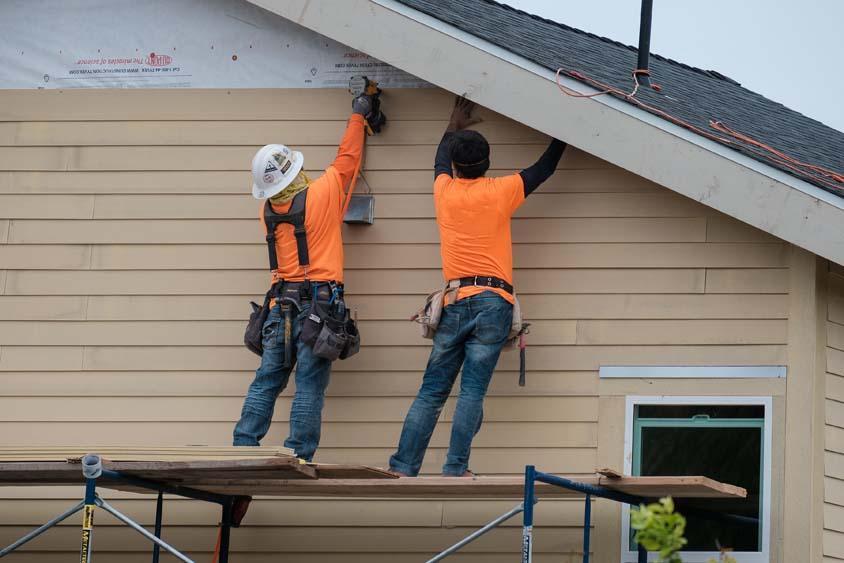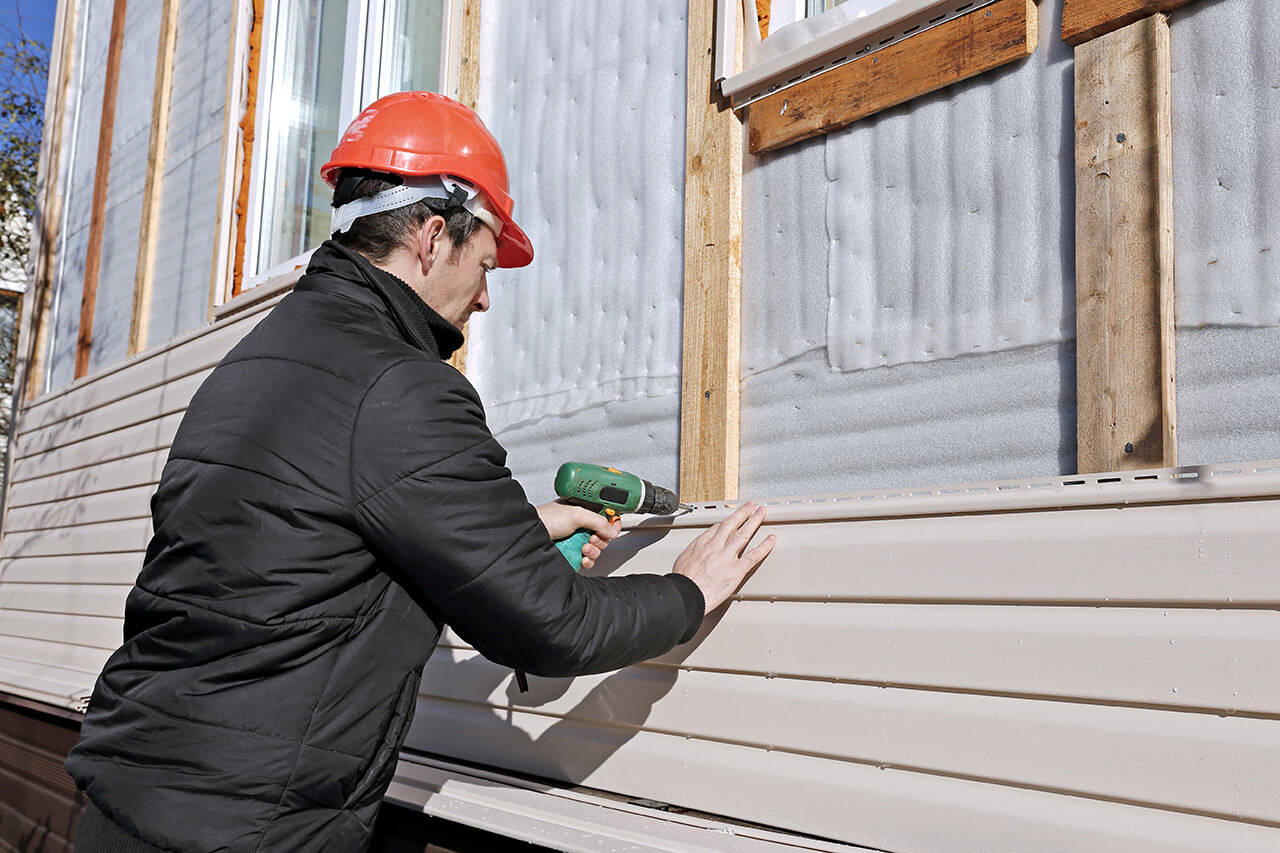A+ Rated Siding Contractor


What CSR&E Can Do For You
Installing new siding on your home is one of the very best things you can do to protect your investment while also improving curb appeal and value. However, an investment in quality home siding is only worthwhile if the siding is installed correctly. Installing siding on your house can be a tricky endeavor. So, it’s a good idea to hire an experienced siding contractor to do the work for you.
Choosing a reputable siding contractor and choosing from the different types of siding are generally the first big decisions to be made. There are several materials to choose from such as vinyl, wood, stucco, brick, or aluminum.
For the best siding installation results, turn to Colorado Superior Roofing & Exteriors. We have the expertise and knowledge to make sure your siding job is completed with the utmost care and attention. We are A+ rated with the BBB and Members of Team Dave Logan.
In addition to offering the best siding installation, we offer other home improvements as well. We are your leading provider of Siding Installation, Roofing and Exterior Painting. Contact us today to give your home a fresh look and increase its value.
Siding Repair & Replacement
Although we repair all types of siding, when it comes to full replacement of the siding on a home, we do not recommend vinyl siding for the Colorado market. Vinyl is made of PVC- Polyvinyl chloride-which is on the red list of building materials to avoid. Not only is it highly susceptible to hail and wind damage, but there are often issues with color fading, warping from sun exposure, cracking and moisture intrusion from Colorado’s extreme weather.
A better option is fiber cement siding, which is one of the most popular siding materials in North America. Fiber cement boards are constructed from a mixture of wood fibers and cement. This material can be molded and cut into many different types of boards, so you will have multiple choices regarding the width of your boards, vertical vs. horizontal siding, various textures, as well as the colors.
Fiber cement boards are made in factories and are typically painted as part of the production process. The paint is applied evenly and is baked into the fibers, making it very durable while saving time painting it. Most Colorado siding contractors recommend this type of siding.
Choosing the right siding contractor to install your siding pays off in the end. Your contractor choice can make the difference between enjoying durable siding with a long lifespan and having to call another professional to fix your previous siding contractor’s mistakes. Make sure your contractor has a good reputation with both customer reviews and the BBB and has the experience to get the job done right the first time.
The 6 Steps in Your Siding Installation Project
1. Preparing Your Home
Prior to the siding crew’s arrival, we ask that you make sure to trim shrubbery and trees around your home. Also, cut your grass just before the installation begins if possible. Our crews use large magnetic devices to pick up any staples or nails that go astray during their work. Having shorter grass increases the effectiveness of these magnets. We also ask that you clear your home’s exterior of items like garden furniture, potted plants, and lawn equipment.
During your siding replacement, you may experience vibrations on your interior walls. To prevent damage, it’s a good idea to remove shelves (or items on them) and pictures that may fall.
It may also be helpful to clear your driveway to allow siding contractors better access to place dump trailers and tarps that will be used to gather and haul away your old siding and other construction debris. Moving your vehicles away from your home will also prevent damage from loose debris. Also, please keep your children and pets away from the worksite.
2. Removing Old Siding
Before we can install the new siding, we first have to remove the old siding. This will most likely cause a temporary mess in your yard. The old siding is usually hauled off in a dump trailer, but occasionally it can be left in a big pile for a few days until the job is completed. But don’t worry, our crews are committed to doing a thorough clean-up of your property when the project is complete.
3. Wall Preparation and Inspection
Before installing the new siding, our professional crew will assess your exterior walls and repair them if necessary. This is an important step that ensures the new siding can be correctly installed. The appearance and stability of the new siding are dependent upon the condition of the walls.
During the inspection of your home, your project manager may discover some damage, signs of rot, or asbestos in your home. Another potential issue that can’t be discovered until the old siding has been removed is whether the sheathing underneath the old siding has deteriorated. Issues like these will have to be rectified before your siding project can be completed and may increase the cost of your project. In the event any of these issues are discovered, your project manager will photo document them and discuss your options with you prior to doing any additional work.
4. Installing Insulation
When we remove your old siding, we typically remove the old insulation behind it as well. We will install house wrap and new, high quality, insulation that is appropriate for the siding being installed.
5. Installing New Siding
Once all the prior steps have been completed, the new siding will be installed to protect your home from the elements. If your siding needs painting, we can help with that too, but this will lengthen the time necessary for completion of the project.
Installing fiber cement siding, which is recommended by most siding contractors, is similar to other siding projects. However it typically takes a bit of extra work and may take a little longer. Like other types of siding, fiber cement is installed against a protective layer and nailed into the studs. The toughness of fiber cement siding calls for tougher tools. The cutting of fiber cement boards for corners and proper lengths requires tougher saws and tools than siding made of vinyl or wood.
6. Cleanup
For any top quality siding contractor, clean up is a very important part of the job. Our goal is to leave your property in exactly the condition it was in before we got there. The pile of old materials and waste in your will be hauled away, and our crews will use magnets to pick up any loose nails or other small metal parts. We will also wash off the newly installed boards to remove any dust and grit.





